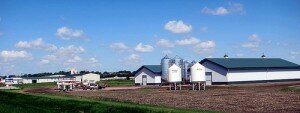 “How frequently do you get the Smithsonian in your town?” asks Ryan Leichenauer, executive director of the Elkhorn Valley Museum. “It’s a very special moment that I think we can all be honored by…it’s not that many communities in the entire country are getting the chance to see this traveling exhibit.”
“How frequently do you get the Smithsonian in your town?” asks Ryan Leichenauer, executive director of the Elkhorn Valley Museum. “It’s a very special moment that I think we can all be honored by…it’s not that many communities in the entire country are getting the chance to see this traveling exhibit.”
Leichenauer is referring to a traveling project adapted by an original exhibit from the National Archives. Drawing from the rich collection of the archives, the exhibit is designed to explore how work became such a central element in American culture by tracing the many changes that affected the workforce and work environments over the past 150 years including the growth of manufacturing.
In other words, it asks: how can we best celebrate the years of hard work and labor that have been integral to America’s history? So far, the exhibit has already visited Gering, Aurora, and Bellevue. In 2016, you can catch it in Norfolk until February 18th, Hastings from March 2- April 1, North Platte from April 11- May 13, and Columbus from May 27- June 26th.
This week, the exhibit opens at the Elkhorn Valley Museum in Norfolk with a few local aspects thrown into the mix. If you head over to see it, according to the you’ll see historical photographs, archival accounts of workers, film, audio, and interactive displays. However, the museum has added over 200 photographs from their personal archives, and has also collaborated with Alternatives for Success students who have conducted interviews with Norfolkians about the way they work.
As manufacturers, we certainly appreciate this effort to provide recognition to often-underappreciated laborers who have been the backbone of America. , “office workers, factory workers, homemakers, truckers, soldiers, and the millions more who keep the nation going through their work make great contributions not only to industry, but also to American culture.”
And it’s certainly true that cultural and public perception divides jobs into ones that are appreciated, and others that are equally important but often underrated or underappreciated. For example, this article notes that authors, surgeons, and attorneys are all careers with a positive perception—but are no more important than the civil engineer, the computer systems analyst, the environmental engineer, or any other of the STEM or manufacturing jobs that “make the world go round.” Thus, we appreciate that “The Way We Worked” pays tribute to everyday Nebraskans, people who work hard at their jobs without certain glory.
Finally, people are invited to send work selfies that will be added to the exhibit on a digital photo frame—just email them to . Leichenauer explains that as a cultural moment, exploring the history of work is important to the community: “It’s an easy way to see how you and your family played a part in the American story. What the Smithsonian is telling applies to me and my life, and I’m part of this American story, too,” Leichenauer said. “We as a community, through our local exhibit, can see how we are exemplifying the Smithsonian story as Northeast Nebraska.”
If you, too want to join the celebration, head to the Welcome the exhibit to its new home, and view living history demonstrations of the printing press and weaving, as well as booths where local businesses will tell their history through pictures and items. The whole museum will be open and the reception is included with admission, so take advantage of the evening!
—
photo credit: via
 Official Nebraska Government Website
Official Nebraska Government Website
